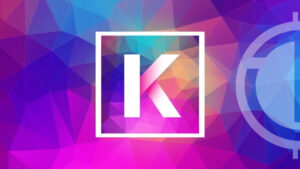
There are a lot of cryptocurrencies that have entered the market ever since Bitcoin made its way to the public domain in 2009. These coins all fall under different categories, such as meme token, utility tokens, stablecoins, and regular crypto coins. Each one of these coins may have its own total of coins that are in its circulating supply.
The supply of a crypto can help investors gauge what the potential future price of a coin can be realistically. The supply also plays a part in determining a crypto coin’s market cap, which in turn affects its ranking in the market.
This article will take a look at the top 10 cryptos by circulating supply. Since the list of cryptos in the market expands to several pages, this list will just focus on the top 30 coins by market cap as seen on the crypto market tracking websites CoinGecko and CoinMarketCap.
What Are Cryptocurrencies?
Cryptocurrencies, or cryptos for short, are digital or virtual currencies that run on top of a blockchain. A blockchain is a decentralized, digital, and distributed ledger that does not require any intervention from an intermediary or third party to run – making it an almost autonomous system.
Instead, a blockchain is maintained by the people who use it, as well as miners or validators. These are people that contribute computing resources to process and verify transactions on the blockchain. In return, these transaction validators are rewarded with crypto native to the blockchain that they are maintaining.
A blockchain enables a peer-to-peer framework for value transaction. This value can be anything that can be digitally represented, and crypto coins or tokens are the container that this value is stored in.
There are different types of cryptos in the market, mainly utility tokens, meme tokens, stablecoins, and then the regular cryptos that everyone is familiar with such as Bitcoin (BTC) or Ether (ETH).
Utility Tokens
Utility tokens are tokens that are native to a specific platform. The most well-known example is probably Binance Coin (BNB) which is the native token on the largest crypto exchange by daily trading volume, Binance.
These utility tokens usually unlock certain benefits that can only be accessed by transacting or trading with the BNB token, or they give a wider range of access to what the platform has to offer. Meaning, there are certain DeFi protocols that are native to a specific blockchain that can only be utilized if you hold the utility token.
In the case of BNB and Binance, trading with BNB gives you a discount on trading fees.
Meme Tokens
Meme tokens are normally not serious projects, and originated as a joke. However, some of these tokens get picked up by a community that then sees its value increase as there is more demand for it. A classic example is the ShibArmy with the meme token Shiba Inu (SHIB).
These projects are then mainly driven by the community that adopted them. Another example is Dogecoin (DOGE), and Elon Musk’s involvement in the Dogecoin project. In fact, Elon Musk is known as the DogeFather.
Meme tokens tend to not have a lot of utility associated, and their prices are mainly driven by the hype amongst members of its community. In some cases, however, the development teams behind the projects may look to increase the utility of the token if there is enough demand. This is evident with SHIB’s dev team creating the SHIB burn portal and a metaverse.
Stablecoins
Stablecoins are an alternative to regular cryptocurrencies and were developed to counteract the volatility of cryptos. To achieve this, stablecoins are pegged to an external form of value that is more stable than crypto. The most popular being USD-pegged stablecoins which are tied to a company’s USD reserves.
There are other types of stablecoins as well, such as algorithmic stablecoins, and crypto-backed stablecoins.
The Difference Between Maximum And Circulating Supply
Many coins in the market will have two supply types, they are maximum supply and circulating supply. Maximum supply refers to the fixed or maximum amount of a crypto token or coin that there will be in a supply. This is a fixed number that cannot be changed.
However, not all coins are released in the supply of a token or a coin when the project is launched. The tokens that are released into the supply make up the circulating supply of a coin or token. The rest of the coins are slowly introduced into the supply as time passes on.
For example, the largest crypto by market cap, Bitcoin (BTC), has a maximum supply of 21 million coins. However, there are only around 19 million coins in circulation. These remaining coins will be introduced over the years through Bitcoin mining.
Top 10 Cryptos By Circulating Supply
Shiba Inu (SHIB)
Shiba Inu is an Ethereum-based altcoin that features a Shiba Inu, a Japanese breed of hunting dog, as its mascot. SHIB is one of the popular meme tokens available in the crypto market and is widely considered as an alternative to its competitor, Dogecoin (DOGE). SHIB was created in August 2020 by an anonymous group or individual by the name of Ryoshi.
According to SHIB’s whitepaper, Shiba Inu was developed as the answer to a simple question: “What would happen if a cryptocurrency project was 100% run by its community?” The project’s founder, Ryoshi, attributes its origin to an experiment in decentralized spontaneous community building.
According to Ryoshi, the power of collective decentralization can build something stronger than a centralized team could ever create.
At the time of writing, SHIB has the largest circulating supply of the top 30 coins with a circulating supply of 549,063,278,876,302 SHIB.
Dogecoin (DOGE)
DOGE is a peer-to-peer, open-source crypto, and is considered as an altcoin and an almost sarcastic meme coin. THe project was launched in December 2013 and has an image of a Shiba Inu dog as its logo.
Although it was seemingly created as a joke, the underlying blockchain of DOGE still has its merits. DOGE’s blockchain uses the Litecoin blockchain as a blueprint. NOtable features of the DOGE blockchain are that it uses the scrypt algorithm and has a low price as well as an unlimited supply.
Dogecoin saw its price rise in the 2017 crypto bubble that eventually popped, resulting in DOGE losing most of its value. However, the coin still has a strong core of supporters who trade it and use it to tip content creators on Twitter and Reddit.
DOGE is second on the list when it comes to circulating supply in the top 30 cryptos list, and currently has a circulating supply of 132,670,764,300 DOGE.
Tron (TRX)
Tron is a blockchain-based decentralized platform with its own native crypto, which is called Tronix (TRX). The project was founded in 2017 by a Singapore non-profit organization, the Tron foundation, and tron aims to host a global entertainment system to enable the cost-effective sharing of digital content.
Tron was founded by its CEO, Justin Sun, and was primarily marketed in Asia. Since then, TRON has expanded globally and has more than 50 million accounts from all over the world. The company behind the blockchain has offices in Singapore and San Francisco.
The Tron network structure has been compared to that of the Ethereum blockchain, and also uses some of the basic building blocks including decentralized applications, smart contracts, and tokens. As a matter of fact, tron has been criticized for maybe “going too far” by borrowing rather than building the basics of the Ethereum platform.
Tron has the third biggest circulating supply with the total standing at 92,394,613,308 TRX.
Tether (USDT)
Tether is the largest stablecoin by trading volume and is also the most established stablecoin with the longest stablecoin presence in the crypto market. Tether is pegged to the U.S. dollar and is backed “100% by Tether’s fiat reserves”, according to the project’s website. A Hong-Kong registered company, iFinex, owns Tether, and also owns the Bitfinex crypto exchange.
Tether was launched as RealCoin in July 2014 and was rebranded as Tether in November 2014. The project then started trading in February 2015. Originally, Tether was based on the BTC blockchain.
As the project matured, it added support for Bitcoin’s Omni and Liquid protocols as well as the Ethereum, TRON, EOS, Algorand, Solana, OMG Network, and Bitcoin Cash blockchains.
Tether updates the breakdown of its reserves holdings daily on its website. As of May 12, 2022, its reported assets are $81.3 billion for USDT. Meanwhile, Tether reported that 83.74% of its holdings are in cash reserves, cash equivalents, short-term deposits and commercial paper.
Furthermore, 4,61% is in corporate bonds, 5.27% is in secured loans to unaffiliated entities, and 6.38% in other investments including digital tokens.
At the time of writing, USDT’s circulating supply stands at 67,549,555,016 USDT.
USD Coin (USDC)
USD Coin (USDC) is a digital currency that is fully backed by U.S. dollar assets, and is a tokenized U.S. dollar. Its value is pegged 1:1 to the value of one U.S. dollar and is designed to remain stable. Therefore, USDC is considered a stablecoin.
USDC’s reserve assets are held in segregated accounts with regulated U.S. financial institutions. Grant Thornton, an accounting firm, is responsible for the oversight of these segregated accounts and provides monthly attestation reports.
When a transaction to purchase one USD Coin using fiat currency is initiated, then that fiat currency is deposited and stored as one U.S. dollar and the new USDC is minted. On the other hand, if USD Coin is exchanged for fiat currency, then the USDC is burned when the fiat money is transferred back to a person’s bank account.
At the time of writing, the circulating supply of USDC is 52,337,703,490 USDC.
Ripple (XRP)
Ripple is a technology that is both a crypto and a digital payment network that can be used to facilitate financial transactions. First released in 2012, Ripple was founded by Chris Larsen and Jed McCaleb.
Ripple’s main purpose is a payment settlement asset exchange and remittance system that is similar to SWIFT, which is currently used for international money and security transfers. Banks and financial middlemen rely on SWIFT when dealing across borders.
The XRP token is premined, and the name of the company behind the project is Ripple. The purpose of the XRP token is to serve as an intermediate mechanism of exchange between two currencies or networks – sort of like a temporary settlement laer denomination.
XRP’s circulating supply now stands at 49,537,223,666 XRP.
Cardano (ADA)
Cardano is a proof of stake blockchain that is designed to be a more efficient alternative to proof of work blockchains. Critical tenets behind Cardano’s development are interoperability, scalability, energy use, growing costs, sustainability, and slow transaction times.
Cardano’s native token, ADA, is used in the blockchain’s proof of stake consensus mechanism, and is given as a reward for work done for the blockchain by users participating in a stake pool.
The current circulating supply of ADA is 34,155,827,433 ADA.
Stellar (XLM)
Stellar is a decentralized crypto that was developed by the Stellar Development Foundation. The organization’s currency, which is called Lumen, is traded under the ticker, XLM. Lumens can be used by traders on the Stellar network which is a blockchain-based distributed ledger network that is able to connect banks, payment systems, and people.
In so doing, the Stellar network facilitates low-cost, cross-asset transfers of value, including payments.
Stellar’s primary focus is on developing economies in the areas of remittances and bank loans to those who are outside of the scope of the banking services. A neat thing about the Stellar network is that it does not charge individuals or institutions for using the network.
Users are also able to send payments in specific currencies even though they may hold credits in another, thanks to Stellar’s support for distributed exchange mode. The network automatically performs the forex conversion in the background. The receiver can then withdraw their currency equivalent through a bank.
The current circulating supply for XLM is 25,271,393,466 XLM.
Cronos (CRO)
CRO is the native token of the blockchain designed by CRO Protocol Labs, which is also known as Crypto.com. It is a company that provides an all-in-one decentralized finance application and exchange. Using the Cronos platform, you can buy and sell crypto, stake your crypto to earn with it, collect all of your crypto in one wallet, and so much more.
Originally launched as Crypto.com, the company behind CRO rebranded itself in 2018. It is an all-inclusive financial platform that offers crypto trading services through an exchange, payment services through an app and a Visa card, decentralized financial options, and non-fungible tokens (NFTs).
CRO cannot be minted because of the design, protocols, and consensus mechanism used. Anyone interested in owning CRO will have to purchase it on Crypto.com’s exchange. However, U.S. residents cannot access the platform as of yet.
The current circulating supply for CRO is 25,263,013,692 CRO.
Binance USD (BUSD)
Binance USD, which has the ticker BUSD, is another U.S. dollar stablecoin that was issued by the dominant crypto exchange, Binance, as well as the blockchain company, Paxos Trust. Similar to its rivals USDC and USDT, the BUSD stablecoin attempts to maintain a price of one U.S. dollar at all times through its fiat reserve backing.
The stablecoin was launched in September 2019, and its price has not deviated from the dollar by more than a few cents since its launch, except in the 2020 flash crash. When the global pandemic hit the financial markets in 202, BUSD reached a high of $1.11 on March 11 of 2020, and hit an all-time low of $0.88 within 24 hours of reaching the high.
At the moment, the circulating supply for BUSD is 19,028,354,503 BUSD.
To Recap
Cryptocurrencies, or cryptos for short, are digital or virtual currencies that run on top of a blockchain. A blockchain is a decentralized, digital, and distributed ledger that does not require any intervention from an intermediary or third party to run – making it an almost autonomous system.
There are different types of cryptocurrencies currently in the market. They are utility tokens, meme tokens, stablecoins, and the regular cryptos that everyone is familiar with.
The supply of a crypto can help investors gauge what the potential future price of a coin can be realistically. The supply also plays a part in determining a crypto coin’s market cap, which in turn affects its ranking in the market.
Stablecoins generally have one of the highest circulating supplies given that they are an alternative to storing investors’ funds in highly volatile cryptos.
When it comes to the top 10 cryptos by circulating supply, the meme token Shiba Inu leads the way with its total circulating supply standing at 549,063,278,876,302 SHIB. The last on the list is the stablecoin issued by the Binance platform, BUSD, with its circulating supply standing at 19,028,354,503 BUSD.














